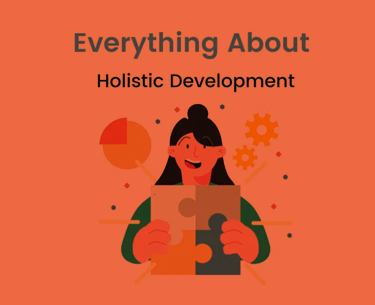
What is holistic development of job description ?
The holistic development of a job description as part of a performance development program is essential for organizations seeking to optimize their human resources. This approach goes beyond traditional job descriptions which often focus solely on tasks and responsibilities. Instead, it means fully understanding the role in relation to the culture of the company, employee involvement and overall business goals.
Organizations providing HR services apply holistic model to create job descriptions that reflect not only the skills and qualifications required but also the emotional and social competencies necessary for success in a dynamic work environment. By integrating elements such as employee experience, organizational values and personal growth opportunities into job descriptions,agencies can attract candidates who are technically proficient.
By analyzing workforce trends and employee performance metrics, HR professionals can identify key competencies that drive success in specific roles. This data centric approach ensures that job descriptions evolve in response to changing business needs and employee expectations, developing a more flexible workforce. Furthermore, holistic development emphasizes the importance of emotional intelligence and interpersonal skills, as these attributes are important for collaboration and innovation within teams.
The performance development program should include mechanisms for continuous feedback and personal development, allowing employees to grow in their roles while contributing to organizational goals. This repetitive process not only improves individual performance but also strengthens team interaction and organizational effectiveness.
Ultimately, the holistic development of job descriptions serves as a strategic tool in talent management, coordinating individual aspirations with organizational objectives. This alignment refines employee satisfaction and drives higher levels of involvement among the team. As businesses face a more complex environment, taking a complete approach to job descriptions will be important in building a workforce that is not only skilled but also strong and able to handle future challenges.
Importance and Benefits of holistic development of job description:
The holistic development of job description is a critical component of a performance development program, as it serves as the foundation for coordinating employee positions with organizational goals. A well written job description does more than just list tasks. It clearly defines roles, expectations and key responsibilities, while also outlining the essential skills and competencies needed to develop employee growth and drive organizational success
1.Employee Contribution: A holistic job description clarifies roles and responsibilities, ensuring employees understand their contributions to the organization. By outlining not only what is expected but also how their work aligns with broader objectives, employees gain a sense of purpose and direction. This clarity reduces uncertainty, enhances accountability and empowers individuals to take ownership of their roles.
2.Key Strengths: It emphasizes the development of both technical and soft skills. A holistic approach identifies key strengths such as communication, problem solving and adaptability, alongside job specific skills. This dual focus ensures employees are equipped to handle evolving challenges and develops a culture of continuous learning and improvement.
3.New Skills and Responsibilities: It supports career progression by outlining growth opportunities within the role. By including potential career pathways, job descriptions motivate employees to acquire new skills and take on greater responsibilities. This alignment between individual aspirations and organizational needs drives engagement and retention.
4.Diverse Needs: A holistic job description promotes integration by considering diverse perspectives. It ensures that roles are designed to accommodate different working styles and abilities, a more supportive workplace.
5.Performance Evaluation: It serves as a tool for performance evaluation. By clearly defining expectations and success metrics, it provides a transparent basis for assessing employee performance areas for improvement.
